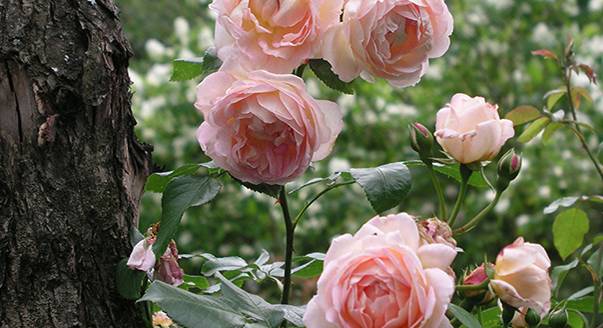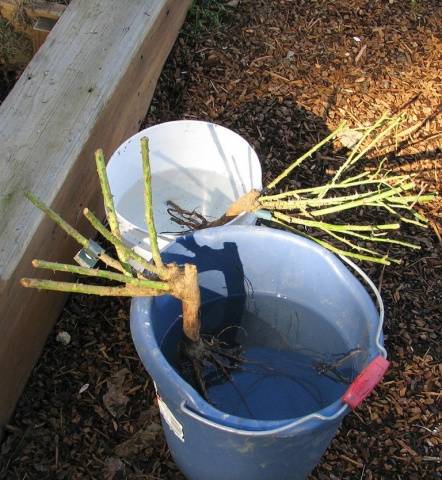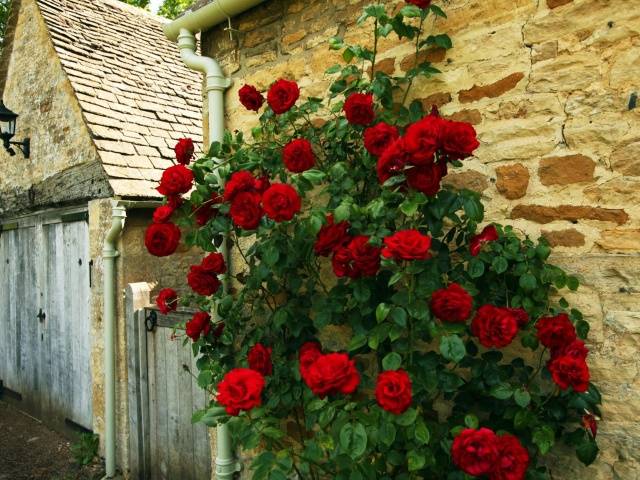Content
It’s not for nothing that the rose is considered the queen of the garden, because even a couple of bushes can transform a flowerbed, making it more luxurious and aristocratic. You can plant roses throughout the warm season (from April to October), but experienced gardeners recommend planting these flowers in the fall.
You can learn about when it is better to plant seedlings: in spring or autumn, as well as how to properly plant roses on your site in this article.
Benefits of autumn planting
Many novice gardeners doubt whether it is possible to plant roses in the spring, or is it better to do this with the onset of autumn cold weather? There is no definite answer to this question; you need to look at the condition and type of planting material, and also take into account the climatic characteristics of the region, the weather and the variety of rose.
It is believed that flowers, seedlings of which are sold in containers, are best planted in warm weather - from May to July. Such cuttings have a weak root system, so roses may not survive the winter. Those seedlings that at the time of purchase have bare, well-developed roots can be planted in the ground in late autumn or spring, as soon as severe frosts have ended.
Autumn planting is usually feared, as it is believed that recently planted roses will not have time to take root and will freeze out with the first frost. But this is not true: practice has shown that autumn is an excellent time for the propagation of these flowers.
Turns out, Autumn planting of roses is even preferable to spring planting for the following reasons:
- When seedlings are planted in the fall, they take root before winter sets in, so the flowers immediately begin to grow in the spring. As a result, autumn roses bloom earlier than cuttings planted in the spring.
- In September and October, air humidity is slightly higher than in spring. This has a good effect on flower seedlings; they take root faster in a new place.
- Autumn rains are heavier and more frequent than spring, the soil is moist, and the seedlings do not have to be watered regularly.
- The soil is well warmed up after summer, the soil temperature is stable, and there is no threat of return frosts (as often happens in spring).
Another advantage of autumn planting roses is the wide range of planting material (cuttings and seedlings) that appears in nurseries at this time of year.
How to plant roses in autumn
Many videos have been made about the proper planting of roses in the fall, because every housewife dreams of growing these flowers in her garden. The roses themselves are not at all whimsical; they do not require complex care or constant attention from the gardener. Growing rose bushes is not difficult, the biggest difficulty is planting the seedlings.
Flowers grown according to all the rules will delight the eye throughout the warm season, but for this the roses need to be provided with the best conditions.
Where to plant roses
Planting roses in the fall is an activity that is not much more difficult than sowing asters or planting petunias. The whole process can be roughly divided into several stages, and the first of them will be choosing a location for the future rose garden.
Rose bushes are very demanding of their habitat; the best place for them would be:
- openwork penumbra created by decorative trellises, arches, climbing flowers;
- elevated area on the south side of the garden;
- Roses prefer neutral soil, so acidic soil should be diluted with lime, and high-moor peat should be added to alkaline soil;
- groundwater should pass lower than one meter from the surface of the earth, and in the spring melt water should not stagnate in the flowerbed;
- The scorching rays of the summer sun are contraindicated for roses; this causes the flowers to fade and be attacked by spider mites;
- draft and dampness are the enemies of roses; in such conditions the plant will get sick and quickly disappear.
Do not forget that stagnant moisture is detrimental to rose bushes. Therefore, if the soil in the garden is dense, you need to take additional care of deep drainage.
Selection of seedlings
A good and beautiful rose can only grow from a healthy and viable seedling. Therefore, you should take the purchase of planting material seriously:
- rose seedlings with an open root system are preferred so that the gardener can assess the condition of the roots;
- a strong seedling has at least three shoots and a woody stem;
- the root of the seedling must be well developed, have white sections free of rot and pests;
- the shoots of a healthy rose have a glossy surface of a rich green color, the thorns on the stems are also shiny;
- the leaves (if any) should be clean and even, without suspicious spots or damage.
Preparing the landing site
The video, which can be found at the end of the article, shows in detail how to plant roses in the fall. An important stage of the entire process is the preparation of the hole and the soil in it before the upcoming planting of the rose seedling.
You need to prepare the hole immediately before planting. If the holes were dug in advance, and the planting of roses itself was postponed due to weather, for example, you need to refresh the soil a little - dig up the walls and bottom of the hole.
If it is windy outside, it is raining heavily, or, conversely, the weather is hot like Indian summer, it is better to postpone planting seedlings. To prevent roses from disappearing, their roots are wrapped in damp burlap and plastic wrap, and the seedlings themselves are lowered into the basement.
The dimensions of the hole must correspond to the root system of the seedling. It must be taken into account that the rose in the garden should be buried deeper than it grew in the nursery - the grafting site is five centimeters below ground level.
The distance between neighboring bushes or other large plants should be about a meter - this way the roses will have enough light and air.
These perennial flowers need fertile, loose, and sufficiently moist soil. If the thickness of the fertile layer in the dug hole is less than 40 cm, you need to additionally fertilize the soil. Compost or humus is suitable as a fertilizer for roses; you cannot use fresh organic matter in the fall - the roots of the flowers will simply burn.
The dug soil is mixed with fertilizers, sprinkled with a small layer of ordinary soil on top - the hole is ready for planting roses.
Rules for planting roses in autumn
Details on how to plant roses in a prepared hole are described in this video:
Briefly, the entire planting process can be described in several points:
- At the bottom of the hole, a small mound of ordinary earth is poured.
- The soil is watered generously with one or two buckets of water (depending on the degree of soil moisture).
- Planting cuttings are prepared: the tops of the shoots are trimmed, leaves are removed (if any), and the roots are shortened slightly. First, rose seedlings are soaked for a day in ordinary cold water.
- A seedling with shortened roots is placed on an earthen mound so that all the roots fit and do not bend upward. Level the roots and carefully sprinkle the seedling with soil.
- Seedlings need to be buried 5-10 cm below the grafting so that they can better withstand the winter. The soil around the bush is thoroughly compacted so that the roots do not end up in the air.
- The top of the rose bush must be sprinkled with a 15-20 centimeter tubercle of soil, which will prevent the seedling from freezing. You can mulch the bush with sawdust, mowed dry grass, or cover it with spruce branches.
Results
Autumn planting of rose bushes has many advantages, and the main one is the high survival rate of such seedlings. If roses are planted in accordance with the recommendations from this article and video instructions, they will not be afraid of frost, shoots will appear on the bushes in the spring and flowers will quickly grow.
You can learn more about planting prickly beauties from this video:





















